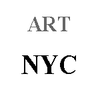
A strange art museum
a beautiful and calm mystery in a famous painting
Author Jin Byeong-Kwan
Publishing Big Fish
Issued on 09.08.
Martin Luther's Protestant Reformation wreaked havoc in Flanders (Belgium and the Netherlands), and the Habsburgs' oppression of Protestants and heavy tax policies eventually led to the Dutch Revolutionary War in 1567. The conflict lasted 80 years before ending with the Treaty of Bestfalen in 1648 when the northern Netherlands won independence.
After religious persecution and professional discrimination during the Revolutionary War (the Catholic state banned payment business), Jews and Protestants flocked to Amsterdam to create a new economic city. They established the East India Company and the Stock Exchange, the world's first corporation, in 1602, turning Amsterdam into a new trading and financial center. In 1614, foreign colonies such as New Amsterdam (now New York) were also built. The Golden Age of the Netherlands was opened.
As the world changes, religious art also undergoes a significant change. The splendid religious art of the existing Catholic Church is regarded as a hotbed of luxury and corruption and loses its place. After losing their big buyer as a church, painters in need made a living by painting wall-mounted paintings that could decorate the houses of ordinary citizens. Fortunately, the changed world has provided opportunities for painters, and wall-mounted paintings create a shining history of painting unique to the Netherlands, which was not seen in other Europe.
The wealthy Dutch began to look for places to invest, and the art market caught their eye. Like aristocrats and royalty in the past, the rich wanted to decorate their houses with paintings, so wall-mounted paintings began to shine. Then, an image of the artist's painting appears, and some people invest in the art market. In the past, churches were the biggest consumers of the art market, but in the Netherlands, they expanded to bourgeois and Europeans. In addition, the trend changed from paintings with complex subjects such as religion and history to easy, compact, and pretty still-life paintings, portraits, and genre paintings. Still-life painting would have had to wait longer for its own time without the economic development of the Netherlands in the 17th century.

![[100 Challenge] DanJi’s reading note_18](http://artnycnewyork.com/cdn/shop/articles/IMG_2538_1100x.jpg?v=1705426173)